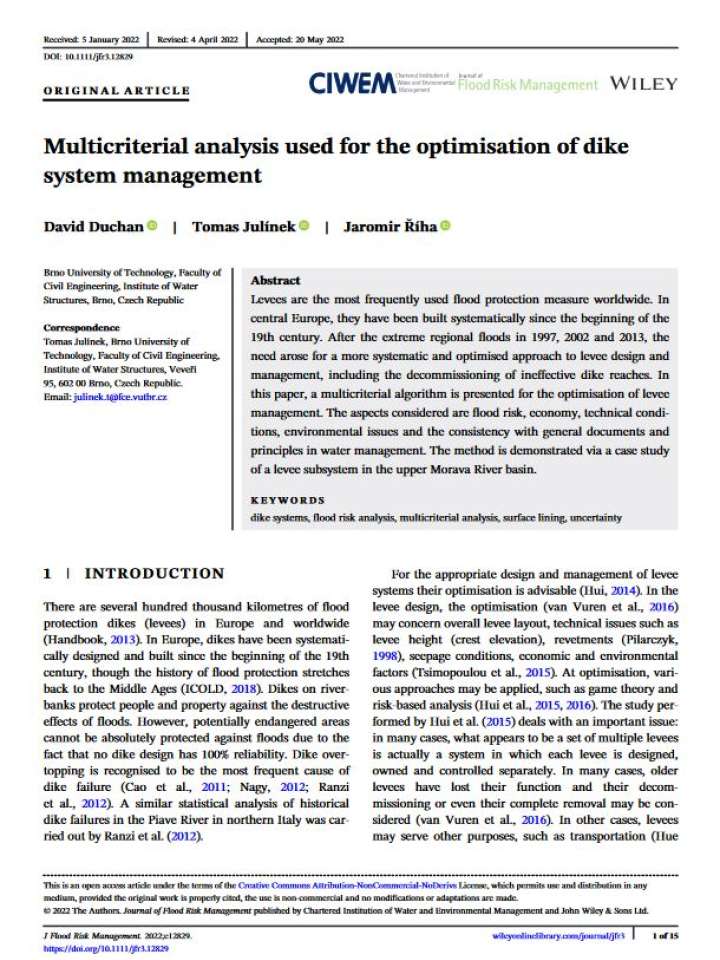Multicriterial analysis used for the optimisation of dike system management
In this paper, a multicriterial algorithm is presented for the optimisation of levee management. The aspects considered are flood risk, economy, technical conditions, environmental issues and the consistency with general documents and principles in water management. The method is demonstrated via a case study of a levee subsystem in the upper Morava River basin. Levees are the most frequently used flood protection measure worldwide. In central Europe, they have been built systematically since the beginning of the 19th century. After the extreme regional floods in 1997, 2002 and 2013, the need arose for a more systematic and optimised approach to levee design and management, including the decommissioning of ineffective dike reaches.
Based on scientific methods comprising an extended flood risk approach and multicriterial analysis, the most advisable variant of levee arrangement was recommended. The novelty of the approach lies in the inclusion of levee decommissioning into the analysis. In the case of the mere administrative decommissioning of the levee with only minor costs, the relative efficiency (S2) may significantly increase, which is not usual in the case of new flood protection measures.
Explore further
